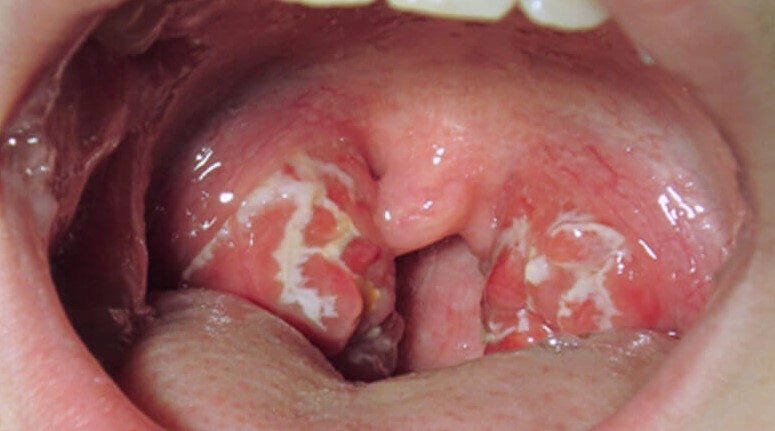Introduction
Mono, or infectious mononucleosis, is a common viral infection that can lead to various symptoms, including the presence of white spots on the throat. These distinctive white patches often appear on the tonsils and surrounding areas, indicating inflammation and an immune response to the Epstein-Barr virus. Understanding these mono-related white spots is essential for proper diagnosis and timely management of the infection.

Mononucleosis, commonly known as mono, is a viral infection that primarily affects adolescents and young adults. One of the hallmark symptoms of mono is the appearance of white spots on the throat. Recognizing these white spots and understanding their significance is crucial for timely diagnosis and appropriate treatment. In this article, we will delve into the world of mono, explore its connection with white spots on the throat, and discuss effective ways to recognize, treat, and manage this condition.
Understanding Mono: The Basics
Mononucleosis is primarily caused by the Epstein-Barr virus (EBV), a member of the herpesvirus family. It spreads through close contact with infected individuals, particularly through saliva. This is why mono is often dubbed the “kissing disease.” The virus primarily targets B lymphocytes, a type of white blood cell, and causes symptoms such as fatigue, fever, sore throat, swollen lymph nodes, and, most notably, white spots on the throat.
The White Spots Connection
White spots on the throat, also referred to as exudates, are a classic indicator of various infections, including mono. These spots are a result of the body’s immune response to the infection. When the Epstein-Barr virus infects the tonsils and the back of the throat, the immune system responds by sending white blood cells to fight off the virus. As a result, dead white blood cells, cellular debris, and viral particles accumulate, leading to the formation of these white spots.
Recognizing White Spots
Spotting white spots on the throat can be a key factor in identifying mono. They may vary in size and appearance, ranging from small, speck-like dots to larger, patchy areas. These spots often have a yellow or grayish tint and are usually accompanied by a red and inflamed throat. However, it’s important to note that white spots on the throat can also be a symptom of other conditions, such as streptococcal throat infections or tonsillitis.
Distinguishing Mono from Other Conditions
Given that white spots on the throat can be indicative of multiple conditions, it’s essential to distinguish mono from other illnesses that present similar symptoms. Streptococcal infections, caused by bacteria, can also lead to throat discomfort, fever, and white spots. A throat culture or a rapid strep test can help differentiate between mono and streptococcal infections. Additionally, a medical professional may consider other symptoms, such as fatigue and swollen lymph nodes, to arrive at an accurate diagnosis.
Treatment and Management
There is no specific cure for mono, as it is a viral infection. However, the symptoms can be managed through various approaches:
1. Rest: Adequate rest is vital for the body to recover from the infection. Engaging in strenuous activities can exacerbate symptoms and prolong recovery.
2. Hydration: Staying hydrated helps alleviate sore throat and fever symptoms. Warm liquids, such as herbal teas and broths, can be soothing.
3. Pain Relief: Over-the-counter pain relievers, such as acetaminophen or ibuprofen, can provide relief from fever, sore throat, and body aches.
4. Avoiding Contact: Mono is contagious, especially in the early stages. Avoid close contact, such as kissing, sharing utensils, or drinking from the same glass, to prevent spreading the virus.
5. Gargling: Saltwater gargles can help soothe a sore throat and reduce inflammation. Mix a teaspoon of salt in a glass of warm water and use it for gargling.
6. Monitoring Complications: In some cases, mono can lead to complications like a swollen spleen or liver. Regular medical check-ups can help monitor any potential issues.
7. Time: Mono symptoms typically last for several weeks. Patience is key, as the body’s immune system gradually clears the virus.
Conclusion
Recognizing and treating mono, especially when it manifests with white spots on the throat, is crucial for a smoother recovery and to prevent the spread of the virus. While these spots are a significant indicator, it’s important to consider other symptoms and undergo proper diagnostic tests to ensure an accurate diagnosis. By understanding the connection between mono and white spots on the throat and following appropriate treatment measures, individuals can navigate through this viral infection with greater awareness and care. If you suspect you have mono or are experiencing severe symptoms, it’s always best to consult a healthcare professional for proper guidance and management.